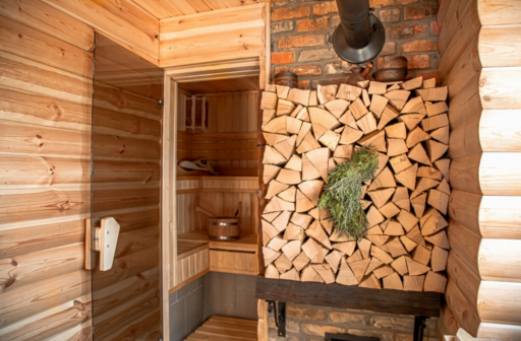When it comes to constructing a wood-burning sauna in your home, there are several key factors to consider in order to ensure its effectiveness and longevity. From proper ventilation to insulation techniques and choosing the right door, each aspect plays a crucial role in creating a comfortable and efficient sauna experience. By paying attention to these important details, you can enjoy the many benefits that a wood-burning sauna has to offer for years to come.

Proper Ventilation for Wood-Burning Saunas
Proper ventilation is essential for wood-burning saunas to ensure a safe and comfortable environment for users. In a wood-burning sauna, the heat is generated by burning wood, which produces smoke and carbon monoxide that need to be properly vented out of the sauna to prevent health risks and ensure good air quality. Proper ventilation also helps regulate the temperature and humidity levels inside the sauna, creating a more enjoyable sauna experience.
There are several ventilation options for wood-burning saunas, including vent pipes, ventilation fans, and air vents. Vent pipes are typically installed at the top of the sauna to allow smoke and hot air to escape, while ventilation fans can be used to help circulate the air and maintain a consistent temperature. Air vents can also be installed to allow fresh air to enter the sauna and help improve air circulation.
When designing a ventilation system for a wood-burning sauna, it's important to consider the size of the sauna, the type of wood being burned, and the location of the sauna. A properly designed ventilation system will help prevent the build-up of harmful gases and ensure a safe and enjoyable sauna experience for users.
Overall, proper ventilation is crucial for wood-burning saunas to ensure a safe and comfortable environment. By investing in a quality ventilation system, sauna owners can enjoy the benefits of a traditional wood-burning sauna while also ensuring the safety and well-being of everyone who uses it.
Insulation Techniques for Maximum Efficiency
When it comes to achieving maximum efficiency in your wood-burning sauna, proper insulation techniques are key. Insulation helps to keep the heat inside the sauna, allowing it to reach and maintain high temperatures with less energy consumption.
One important factor to consider when insulating your wood-burning sauna is the type of insulation material to use. Common options include fiberglass, mineral wool, and foam board insulation. It's important to choose a material that is heat-resistant and able to withstand the high temperatures generated in a sauna environment.
Additionally, proper installation of the insulation is crucial. Make sure all gaps and seams are sealed to prevent heat from escaping. Consider using multiple layers of insulation to create a barrier that minimizes heat loss.
Another important aspect of insulation is the vapor barrier. This helps to prevent moisture from entering the walls of the sauna, which can cause damage and reduce the effectiveness of the insulation. Make sure to install a vapor barrier on the inside of the insulation to protect the sauna walls.
By implementing proper insulation techniques in your wood-burning sauna, you can ensure that it operates at maximum efficiency, providing a comfortable and relaxing experience for years to come.
Choosing the Right Door for Your Wood-Burning Sauna
First and foremost, the door should be made of a heat-resistant material such as glass or metal to withstand the high temperatures generated by the wood-burning stove.
Additionally, the door should be properly sealed to prevent heat loss and ensure that the sauna reaches and maintains the desired temperature. Look for a door with high-quality gaskets or seals that will create a tight seal when closed.
In terms of design, consider a door with a window to allow natural light into the sauna and create a more open and inviting atmosphere. A window also provides a way to easily check on the sauna's temperature without opening the door and letting heat escape.
Lastly, choose a door that complements the overall aesthetic of your sauna and fits in seamlessly with the rest of the design. A well-chosen door can enhance the beauty and functionality of your wood-burning sauna, creating a relaxing and enjoyable experience for years to come.
